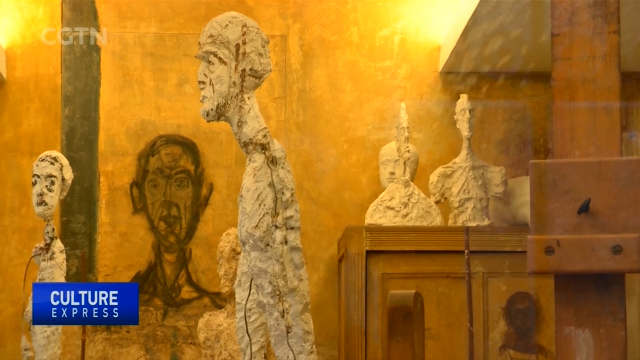
19:00, 21-Jun-2018
In the Public Eye: New Giacometti Institute shows artist's Parisian studio as he left it
02:32

More than 50 years after his death, curious art-lovers can now see sculptor Alberto Giacometti's Parisian studio exactly as he left it -- right down to half-finished sketches and his ashtray.
The Giacometti Institute contains dozens of paintings and sculptures, carefully preserved by his wife after his death, including extremely fragile artworks in plaster which have never been shown to the public. Amongst the works on display is "The Walking Man", which currently is the second most expensive sculpture ever sold, at $104.3 million. It is typical of Giacometti's work with its long, thin limbs all in bronze.
SERENA BUCALO-MUSSELY EXHIBITION CURATOR "Certainly, there are exceptional works in plaster. Works which are extremely fragile, which can't travel, so to have a studio, an institute in Paris, allows us to exhibit works that never travelled and had been in storage for a very long time, because they are very fragile plaster pieces. And therefore we can exhibit them, notably the plaster of 'The Walking Man' or the small painted figurines which are found in the corner of the studio."
Although born in Switzerland, Giacometti spent most of his working life in Paris, from 1926 till he passed away in 1966, in a small studio in the south of the city. The Institute contains a complete reconstruction of his studio, just down the road from its original location, in the Montparnasse district of Paris, an area known for being a thriving artistic hub in the middle of the 20th century.
CATHERINE GRENIER DIRECTOR, GIACOMETTI FOUNDATION "Giacometti was an avant-garde sculptor who managed to touch the widest public, because his art cutlivates a very, very strong emotion. And also what makes him unique is his character, his position as an artist which was exemplary, he was sort of the incarnation of the modern artist in all the freedom associated to this idea."
The Giacometti Foundation, which is in possession of the majority of Giacometti's work, decided to recreate the artist's studio as opposed to creating a museum, as Giacometti had always insisted on the strong link between his work and the environment in which he made it. YR,CGTN.

SITEMAP
Copyright © 2018 CGTN. Beijing ICP prepared NO.16065310-3
Copyright © 2018 CGTN. Beijing ICP prepared NO.16065310-3